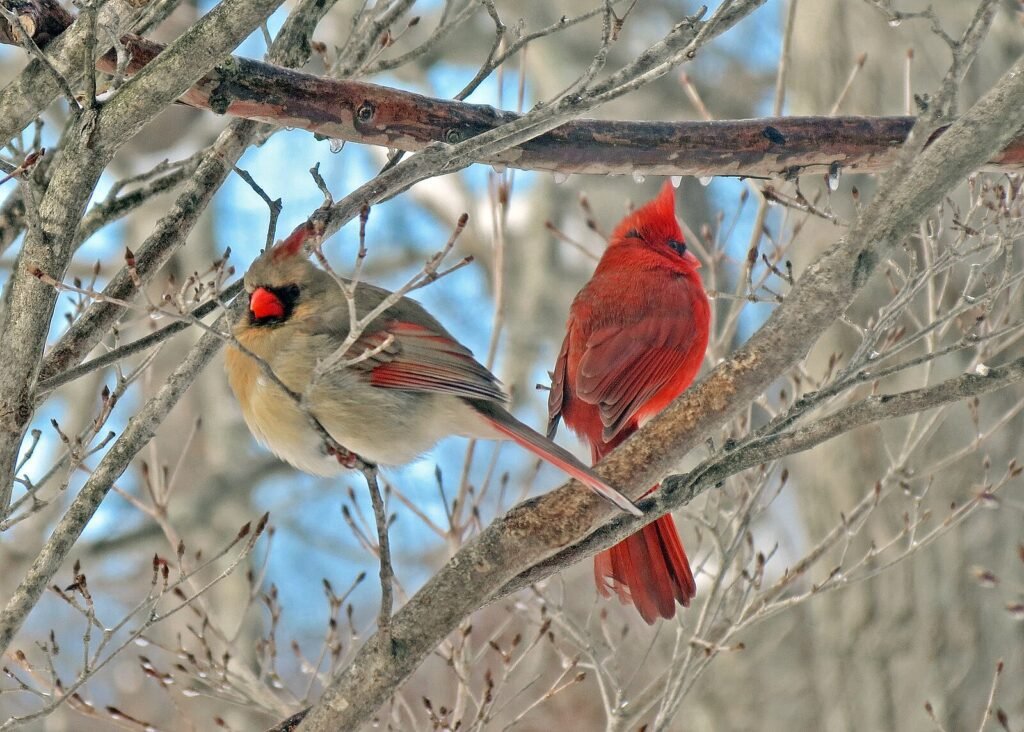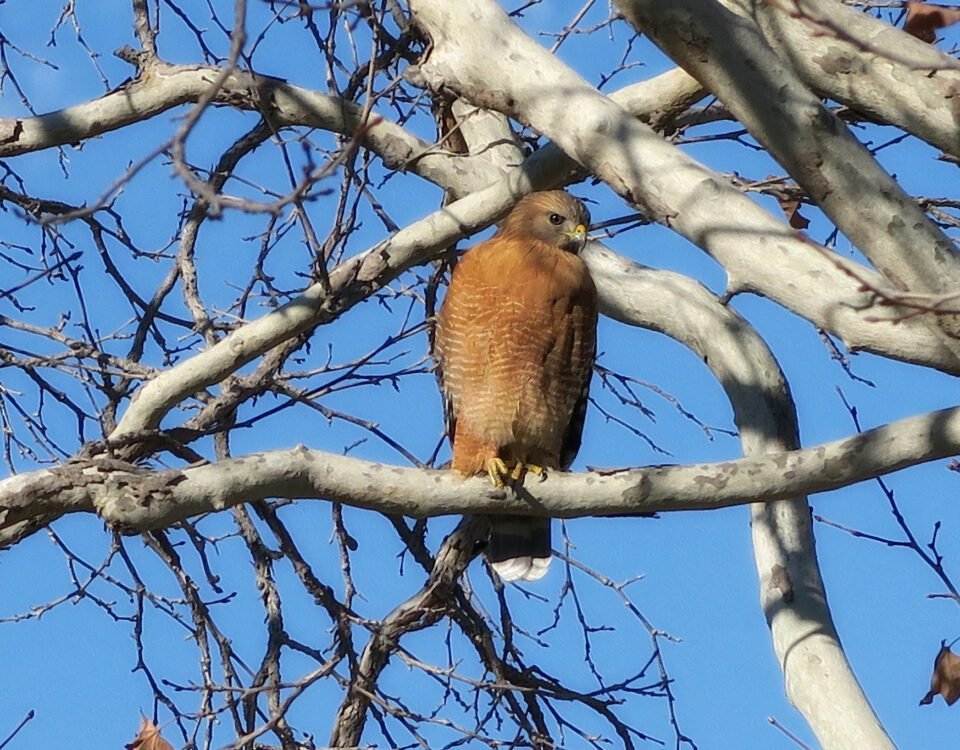![Why Birds Aren’t Coming to the Feeder? [Causes & Solutions]](https://petsfm.com/wp-content/uploads/2023/12/Why-Birds-Arent-Coming-to-the-Feeder-Causes-Solutions-150x150.jpg)
![Why Birds Aren’t Coming to the Feeder? [Causes & Solutions]](https://petsfm.com/wp-content/uploads/2023/12/Why-Birds-Arent-Coming-to-the-Feeder-Causes-Solutions-150x150.jpg)
![Why Birds Aren’t Coming to the Feeder? [Causes & Solutions]](https://petsfm.com/wp-content/uploads/2023/12/Why-Birds-Arent-Coming-to-the-Feeder-Causes-Solutions-150x150.jpg)
Why Birds Aren’t Coming to the Feeder? [Causes & Solutions]
December 27, 2023


Why is My Male Cat Attacking Female Cat? How To Stop?
December 29, 2023Northern Cardinals, known scientifically as Cardinalis, are a favorite among bird enthusiasts in America, renowned for their striking appearance. This species, one of two in its genus found in North America, is widespread across the central and eastern regions of the United States, extending as far west as Arizona.
Birdwatchers often enjoy the presence of these melodious birds nesting on their properties annually, and with some fortune, they might even choose your backyard for their home. But what are the specifics of their nesting behavior? Where do cardinals nest?
Northern Cardinals typically begin their nesting season in spring, but it’s common for them to initiate the construction of their nests towards the end of winter. The female cardinals are responsible for building modest, cup-like nests nestled within the thick, intertwined foliage of a bush or tree, usually at a height of 5-7 feet from the ground.
This article focuses on the nesting habits of the Northern Cardinal, offering insights into their nesting locations, timing, and methods in both wild and suburban areas across North America.
Related Read: What Does Seeing a Cardinal Mean? Is It Spiritual?
Where do cardinals nest?
Northern Cardinals, known for their territorial nature during the breeding season, often choose nesting sites near where they are regularly seen, like in backyards.
These birds typically construct their nests within the branches of thorny shrubs and vines, taking advantage of the dense and difficult-to-penetrate vegetation.
These nests are utilized by the Northern Cardinals for approximately three weeks, during which they incubate their eggs and nurture their young.


Baby Cardinals
These birds do not reuse their nests, leading to a particularly active breeding season as some may produce up to four broods annually. After the chicks have fledged, the male cardinal is responsible for caring for them, allowing the female to prepare for the next brood.
This strategic location protects their eggs and chicks, shielding them from harsh weather conditions and potential predators.
Widely found as breeding residents across the United States, Northern Cardinals extend their range from Southeastern Canada in the north to Belize in Central America. Additionally, they have been introduced to regions beyond their native habitat, and as a result, nesting Cardinals can also be found in places like Hawaii and Bermuda.
Their nesting preferences are pretty versatile, as Cardinals adapt to various shrubby environments. They are nestled in suburban areas, woodlands, and along watercourses, particularly in drier regions.
Do Cardinals nest in the exact location every year?
Northern Cardinals do not typically nest in the same exact place every year. While they may return to the same general area or territory, primarily if it provided successful breeding in the past, they usually build a new nest for each breeding season.
This behavior helps reduce the risk of parasite infestations and predation, as reusing old nests can attract these unwanted issues.
Do Cardinals nest in backyards?
Yes, Cardinals often nest in backyards. They are well-adapted to suburban environments and can frequently nest in areas where thick shrubbery or dense vegetation provides adequate cover and protection.
This makes backyards with suitable habitats, such as gardens with shrubs or small trees, ideal places for Cardinals to build their nests and raise their young.
Do Cardinals use nest boxes?
Northern Cardinals typically do not use nest boxes. Unlike some bird species that readily adapt to nesting in containers provided by humans, Cardinals prefer to build their nests in natural settings.
They usually choose dense, shrubby vegetation or the forks of branches in trees and shrubs. Their preference for building a cup-shaped nest in thick foliage offers them the concealment and protection they need from predators and harsh weather conditions.
However, providing natural habitat elements in your yard, such as dense shrubs or thickets, can encourage Cardinals to nest in the area.
Additionally, offering food sources like bird feeders can make your yard more attractive to these birds, although it won’t necessarily encourage them to use a nest box.
Which trees do cardinals build their nests in?
Cardinals choose a variety of trees and shrubs across America for their nesting sites, including:
Trees:
- Pines: Coniferous trees are known for their needle-like leaves and distinctive cone-bearing branches.
- Maples: Deciduous trees are recognized for their broad leaves, often producing vibrant autumn colors and sweet sap for maple syrup.
- Red and White Cedars: Evergreen conifers with aromatic wood are often used in horticulture for their ornamental value.
- American Elms: Large deciduous trees with a vase-like shape, known for their hardy nature and arching branches.
- White Spruces: Tall, narrow conifers with dense foliage, commonly found in northern regions and valued for their timber.
- Black Locusts: Deciduous trees with compound leaves and clusters of fragrant white flowers, often used for wood products.
- Netleaf Hackberry: Hardy trees with rough bark, producing small, purple, berry-like fruits and known for their adaptability to various environments.
Shrubs:
- Honeysuckle: A group of shrubby or vine plants, often with fragrant flowers and sometimes producing sweet nectar.
- Hawthorn: Dense, thorny shrubs or small trees are known for their clusters of white flowers and small red berries.
- Blackberry: Prickly shrubs known for their edible fruits, with thorny branches providing excellent cover.
- Privet: Fast-growing shrubs commonly used for hedging, characterized by dense foliage and small white flowers.
How high are the nests of cardinals?
Cardinal nests are typically built at heights ranging from 1 to 15 feet above the ground, though most commonly, they are between 3 to 10 feet high. The exact height can vary depending on the availability of suitable nesting sites and the surrounding habitat.
Cardinals choose nesting locations that balance concealment, protection from predators, and proximity to food sources, often leading them to select spots within dense shrubbery or low branches of trees. The height at which they build their nests is influenced by these factors and the specific characteristics of the local environment where they are nesting.
What do cardinal nests look like?
The overall appearance of a cardinal nest is rough and can appear shaggy or ragged due to the nature of the materials used and the construction method. Despite this, they are functional and provide shelter for the cardinal’s eggs and young.
They typically have the following characteristics:
- Shape and Size: The nest is cup-shaped, with an average diameter of about 3 to 4 inches across and 2 to 3 inches deep. The size can vary slightly depending on the materials available and the specific location of the nest.
- Materials: Cardinals use various materials to build their nests, including twigs, bark strips, grasses, leaves, and sometimes even paper or other urban debris. The female cardinal is primarily responsible for constructing the nest.
- Construction: The outer part of the nest is usually made from twigs and larger pieces of material, providing structure. The interior is lined with finer materials like grasses and hair, making it smoother and more comfortable for the eggs and chicks.
How do Cardinals build their nests?
Female Northern Cardinals construct their nests by carefully selecting a branch fork and creating the nest without affixing it to the tree. The nest features multiple layers, starting with a coarse outer layer that appears loose and disorganized.


Cardinal Eggs
Inside, there’s a neater and softer cup made for comfort and insulation. The females skillfully shape this nest by bending twigs around their bodies, forming a snug and appropriately sized cup. They meticulously work in a circular motion, pressing and positioning the materials with their feet.
What do Cardinals use for nesting?
Cardinals utilize a mix of natural and man-made materials to build their nests. The structure’s outer part is composed of twigs, while the inner layers are softer and made from materials such as bark strips, leaves, grasses, and pine needles. Cardinals also incorporate synthetic materials like plastic and paper into their nests.
Do male or female Cardinals build the nest?
The construction of the nest is primarily the responsibility of the female cardinal. While she is the primary builder, her male partner contributes by gathering and supplying twigs and other materials needed for the nest building.
What time of year do cardinals nest?
Northern Cardinals commence their nest-building from late winter through mid-spring, typically between February and April. This period marks the transition from winter as the days lengthen. These birds often initiate their nesting even before the final snow melts and before the foliage on trees and shrubs has fully developed.
Cardinals are known for their early and extended breeding season. In favorable conditions, they can raise multiple broods, with the nesting period potentially extending until early September.
How long do cardinals nest for?
The nesting period of Northern Cardinals can span a significant part of the year, lasting up to eight months. The entire process of raising a single successful brood can take more than ten weeks.
This extended period begins with the pair searching for a suitable nesting site, a process that can extend beyond two weeks. Once a site is chosen, the female cardinal typically spends about a week constructing the nest. She then lays eggs within a week of completing the nest.


Cardinals on Trees
The incubation of the eggs lasts for about 11 to 13 days until they hatch. The chicks’ fledging occurs quickly, within 9 to 10 days post-hatching. After leaving the nest, the young cardinals continue to be cared for by their parents for another month or longer until they are fully independent.
Conclusion
In conclusion, the Northern Cardinal, a beloved and common backyard bird, exhibits fascinating nesting behaviors. These birds, especially the females, skillfully construct their nests in varied environments using natural and artificial materials. Their adaptability and extended breeding season highlight the cardinal’s resilience and enduring appeal in North American landscapes.




